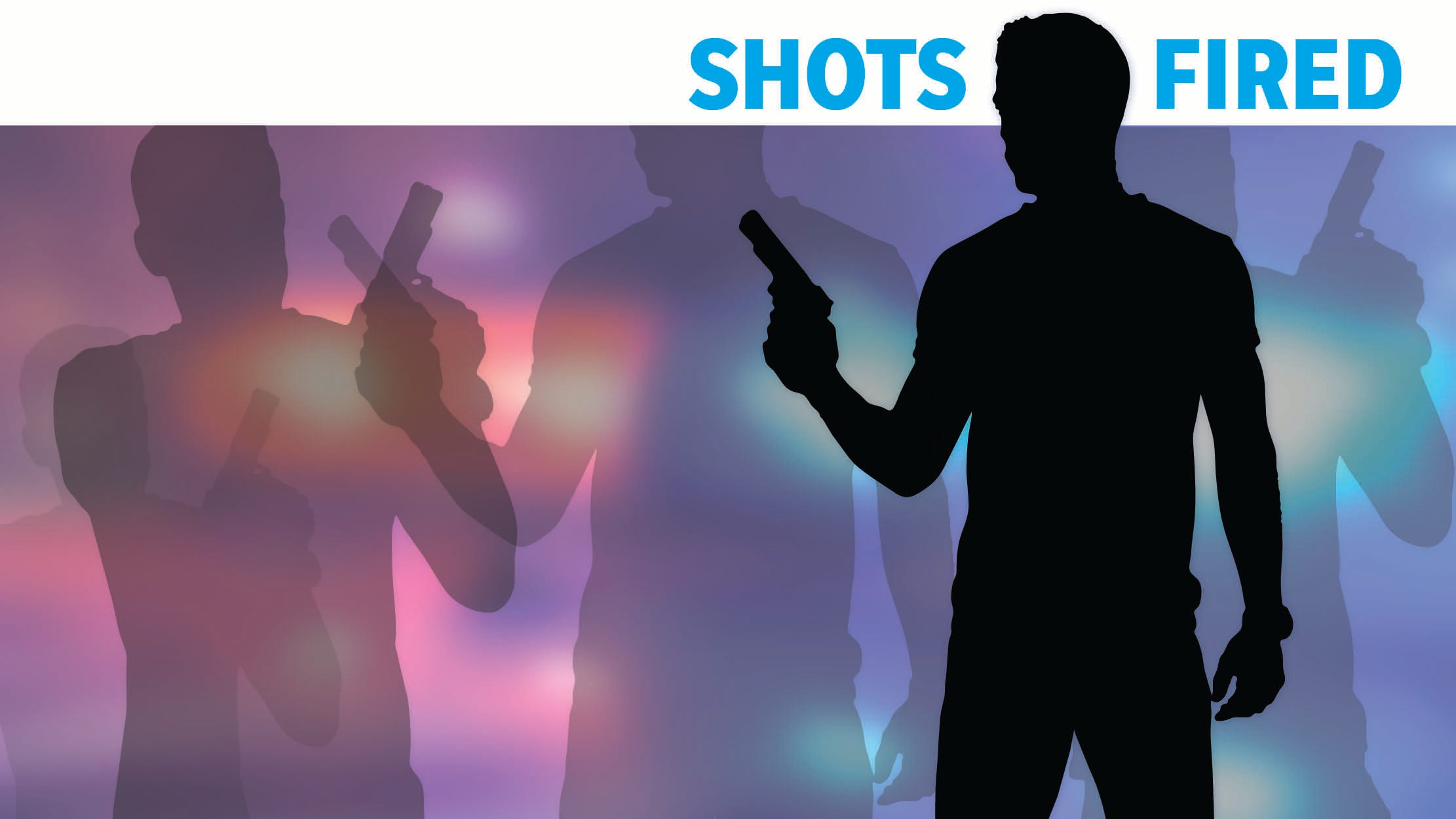On average, it happens every five days: An Arizona police officer aims a weapon and shoots at someone.
The average age of a person shot at by police: 35.
Most often, that person is an armed man, either white or Hispanic, the data shows. Often, he carries a gun or knife.
Sometimes, it begins with a 911 caller reporting a crime in progress, or a police task force attempting to arrest a fugitive. Many times, someone close to that person is asking for help, reporting domestic violence or threats of suicide.
These police shootings are reported one by one and remembered for their unique characteristics. Some make headlines or inspire protests — 14-year-old Antonio Arce in Tempe, 50-year-old Michelle Cusseaux in Phoenix, 26-year-old Daniel Shaver in Mesa, 27-year-old Loreal Tsingine in Winslow.
Many more occur with little public notice.
But one shooting after another, every five days, adds up — taking fathers, sons and brothers; mothers, daughters and sisters.
“People will read stories in their local news and they will think these are one-offs," said Philip Stinson, an associate professor of criminal justice at Bowling Green State University in Ohio. "But it’s only when you start to aggregate the data statewide and nationally that people start to realize how big of a problem it is.”
In 2018, police shootings hit record levels in Phoenix, the fifth most populous city in the country. Phoenix had more police shootings than New York, Los Angeles, Chicago or Houston. The number of police shootings in Phoenix more than doubled from 2017; over the same span, police shootings in similarly-sized cities fell.
The Arizona Republic investigation dug into the numbers and determined this deadly trend extends statewide and stretches far longer than a single year.
The whys behind the shootings defy easy answers. But our analysis identified some key factors: guns, aggressive behavior, mental illness, training, police culture.
We want our police officers to come home safely and we want our residents to come home.
"Every year there are all these individuals who have their lives destroyed, but the city has not cared for them. It’s easy for police and the community to say these people are criminals and that they deserved it," said Viri Hernandez, the executive director for Poder in Action, a Maryvale-based advocacy group that has pushed for changes in police training.
As the smoke clears from a bloody 2018, the sheer number of police shootings remains a raw question for the community and the police agencies that serve it.
"We want our police officers to come home safely and we want our residents to come home," Phoenix Mayor Kate Gallego said.
A FRANTIC CALL, A FINAL STANDOFF: 'Please don't hurt him. He just needs help'
Chiefs are talking about more training and, in some cities, a culture change for police. At least one mayor is pushing for more assistance for people with mental-health issues and those battling addiction or depression. Community groups are stepping up their advocacy for less aggressive police behavior and more transparency.
627 people fired at by police in the 8-year span
Police are shooting people in all walks of life and all Arizona communities.
The Republic compiled a database that details each law enforcement shooting reviewed by a county attorney in Arizona from 2011 to 2018.
From 2011 to 2018, there were 600 police shooting cases reported statewide. Officers fired at 627 people, killing just over half of them.
In 2018, 117 police shootings took place statewide — a 75% increase from the previous year, and perhaps the most in Arizona's history.
In some shootings, officers' decisions to fire at someone who points a gun at them seem clear-cut. It's easy for the police, the public and the prosecutors who review these shootings to say officers had no choice.
Mario Edward Garnett, 40, killed a Mississippi police officer before a Phoenix officer fatally shot him on Dec. 28, 2013. Garnett, a U.S. Army veteran, had robbed a Phoenix bank and got into a shootout with police. Officer Fabian Gonzalez killed Garnett.
"Fortunately, we have pretty well-trained and professional police officers that don't make a lot of mistakes or questionable decisions," said Joe Clure, the executive director of the Arizona Police Association, an organization that advocates for police officers' interests. "At times, that has happened and they've been held accountable."
Support for officers' actions also comes from an undeniable truth: Theirs can be a dangerous job.
In the past eight years, 13 Arizona officers died by gunfire in the line of duty, according to the Officer Down Memorial Page, a nonprofit organization that tracks police officers who have died nationwide.
Among the officers who were fatally shot in Arizona: Phoenix Detective John Hobbs in 2014, Phoenix Officer David Glasser in 2016, and Nogales Officer Jesus "Chuy" Cordova, DPS Trooper Tyler Edenhofer and Deputy U.S. Marshal Chase White in 2018.
Quantifying the number of police shootings and analyzing the data is difficult, partly because law-enforcement agencies don't make comprehensive information readily available to the public. Even internally, many departments don't track certain elements of shootings, such as the mental health of the person shot or the number of shootings involving an individual officer.
Comparing Arizona's police shootings with those in other states is even more complex.
RECORD LEVELS OF SHOOTINGS: Phoenix police shot at more people than NYPD in 2018
No state government agencies collect statewide data on police shootings. And the FBI and the Centers for Disease Control and Prevention, which tracks causes of death, appear to undercount police shootings because police agencies don't report the full scope of the issue.
The Washington Post began tracking fatal police shootings nationwide in 2015. Seth Stoughton, an assistant law professor at the University of South Carolina and former police officer, analyzed the Post's data from 2015 to 2018. His analysis shows Arizona had the fourth-highest number of fatal police shootings per capita in the nation, after Oklahoma, Alaska and New Mexico.
It's going to be 'suicide by cop.'
Many of these shootings involve calls for help on behalf of someone in the midst of a crisis — drugs, suicide, post-traumatic stress disorder or simple stresses of life.
In Cottonwood, on April 2, 2011, four police officers responded to a report of a suicidal woman at an RV park. Betty Shanafelt, 62, told police she had tried to kill herself but couldn't do it.
"It's going to be 'suicide by cop,'" she told them, according to the Camp Verde Journal.
Shanafelt had lost her job, been evicted from her home and couldn't afford the payments at the RV park. Few other details of her life were available.
The officers twice tried a stun gun on her, with no success. Shanafelt, balancing on a walking cane, then began to pull a gun out of her holster, according to the article.
Officer Steve Phoenix fired three shots, killing Shanafelt. Police later found she had a second firearm in her fanny pack.
Some key findings in The Arizona Republic database:
In the eight-year period,
- Arizona averaged about 75 police shootings a year.
- Police fired at 627 people in 600 different encounters; 353 people died. The outcomes of four cases were unable to be determined.
- The three police agencies with the most shootings were the Phoenix Police Department with 201, the Tucson Police Department with 55 and the Mesa Police Department with 50.
- Eighty-nine percent of those shot were armed, most of them with a gun.
- Almost all those shot were men.
- The Republic was able to identify the race of the person shot for 67% of the individuals. Of those, 43% were white; 39% were Hispanic; 13% were black; 4% were Native American; less than 1% were Asian.
- A mental-health history was a confirmed factor in at least 15% of the 600 cases.
- The state has 15 counties, and 14 county attorney's offices have reviewed a police shooting. The Santa Cruz County Attorney's Office, in southeastern Arizona, is the exception.
- Of the hundreds of cases reviewed, one officer was charged with murder in connection with an on-duty shooting.
Individual shootings in the database spur other questions about why officers decided to fire.
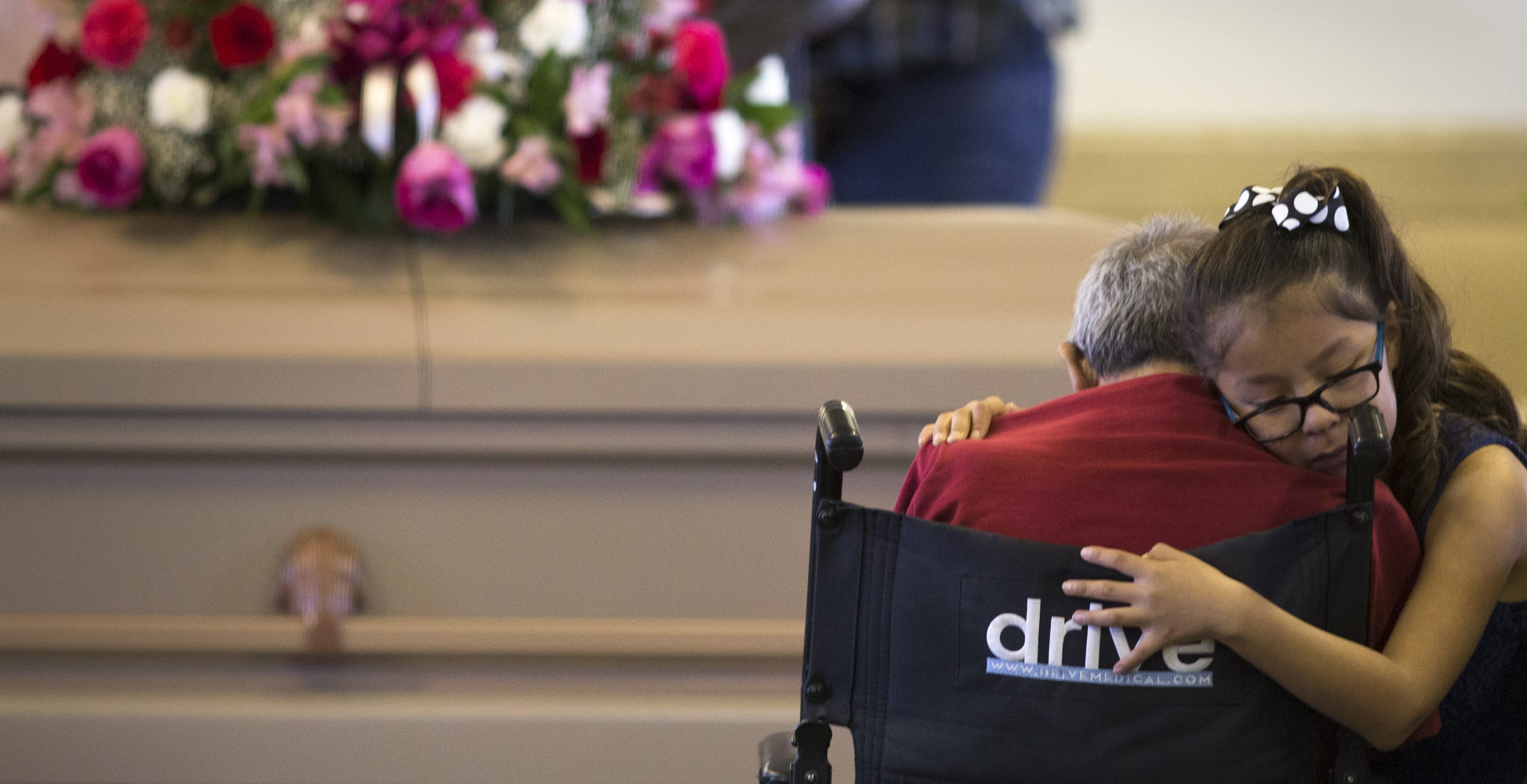
Why so many police shootings?
Law enforcement officers, professors, lawyers and community organizers interviewed by The Republic had mixed reactions to the findings.
Some said the analysis confirmed what they have always believed: Police in Arizona use deadly force too often.
Some said the number of shootings reflects the dangers of the job and the current environment. They said the attitude of people who come in contact with officers has grown more defiant, sparking more police shootings.
Others said there's no single answer to the question of why Arizona saw the number of shootings it did.
"There's really no normal. You have these ebbs and flows within cities and states that just tend to have this natural up and down that's almost unexplainable," said William Terrill, a criminology professor at Arizona State University whose research focuses on police use of force. "It's almost a function of something causing it, but no one can explain it."
Kathy Brody, the legal director for the American Civil Liberties Union of Arizona, said she believes the number of police shootings in the state reflects the military mindset police officers have.
"Maybe a larger view of where policing is in our country today is that police are kind of viewing the people in the community as the enemy, or the people on the other side, versus the people that they're trying to protect," she said. "So, it's like ... the warrior mindset versus the guardian mindset. It seems like these numbers reflect that."
Every officer, but 1, cleared by prosecutors
Every police shooting is reviewed internally by a law enforcement agency and externally by the county attorney.
In the hundreds of shooting reviews that have been completed in the past eight years, every officer but one was cleared of criminal wrongdoing.
HOW WE DID IT: Arizona database of police shootings from 2011-2018
That one was prosecuted but acquitted by a Maricopa County Superior Court jury.
In November 2017, the jury viewed on-body camera footage of former Mesa Officer Philip "Mitch" Brailsford fatally shooting 26-year-old Daniel Shaver in a hotel hallway.
The video shows an intoxicated Shaver crawling toward officers while a sergeant yells commands. At one point, Shaver starts to cry, begging for his life, before Brailsford shoots him. Brailsford testified that he thought Shaver was reaching toward his waist, possibly to pull out a weapon. No weapon was found.
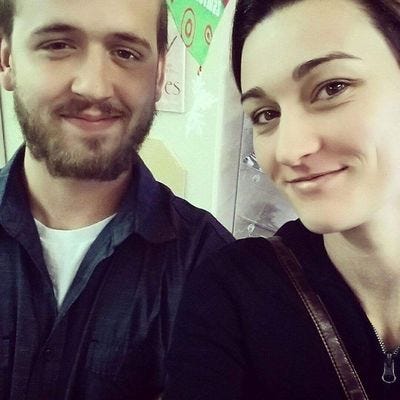
The jury acquitted Brailsford of second-degree murder and a lesser charge of reckless manslaughter.
The case underscored how difficult it is for prosecutors nationwide to convince juries to convict a police officer.
The U.S. Supreme Court has ruled that officers can use deadly force when a "reasonable officer" would do the same in a similar situation. This broad criterion has made it difficult to challenge an officer's decision to shoot, especially if officers fear they could be killed, said Kami Chavis, a law professor at Wake Forest University in Winston-Salem, North Carolina.
Still, 600 police shootings and one prosecution seems like a disparity, Chavis said.
"What that suggests is that you basically have a policy of not charging police officers, when you have that many over that number of years," she said. "Criminal prosecution serves several different functions, and one function is, of course, you want to have some justice for the victim, but it also serves the purpose of deterrence."
Stinson said it is rare for officers to be charged in connection to an on-duty shooting and even rarer for officers to be convicted.
As of May 7, since 2005, 102 non-federal police officers have been charged with murder or manslaughter in on-duty shootings nationwide, according to Stinson's research. Four of them were convicted of murder charges and 32 were convicted for lesser offenses. Twenty-three cases are pending.
Maricopa County Attorney Bill Montgomery, who was elected in 2010, said that just because his office clears an officer in a case, that doesn't always mean prosecutors believe a shooting is justified or that it was tactically a good decision.
In some cases, he said, the clearance just means there is not enough evidence to convince a jury of a guilty verdict.
He said his job isn't to determine whether a police officer used the right tactical approach when the officer fired. His job, he said, is to determine whether the officer broke the law.
"That's not how I would have responded tactically. But that's not my role as the prosecutor," he said.
Activists said part of the reason why prosecutors rarely charge an officer is because the two agencies work so closely together in criminal cases. Charging officers could tarnish the professional relationship prosecutors have with police departments, said Brody, the legal director for ACLU in Arizona.
"The connection between the prosecutor's office and the police department — they work with them all the time, it's part of the job," she said. "So, the idea that the county attorney's office and people in the county attorney's office can be objective when evaluating whether (officers) should be prosecuted, it's questionable at best. There could be other review methods or there could be special prosecutors."
On May 15, 2011, Pima County SWAT officers were serving a search warrant in connection to a marijuana trafficking investigation when they shot and killed 26-year-old Jose Guereña, a U.S. Marine who had served in the Iraq War.
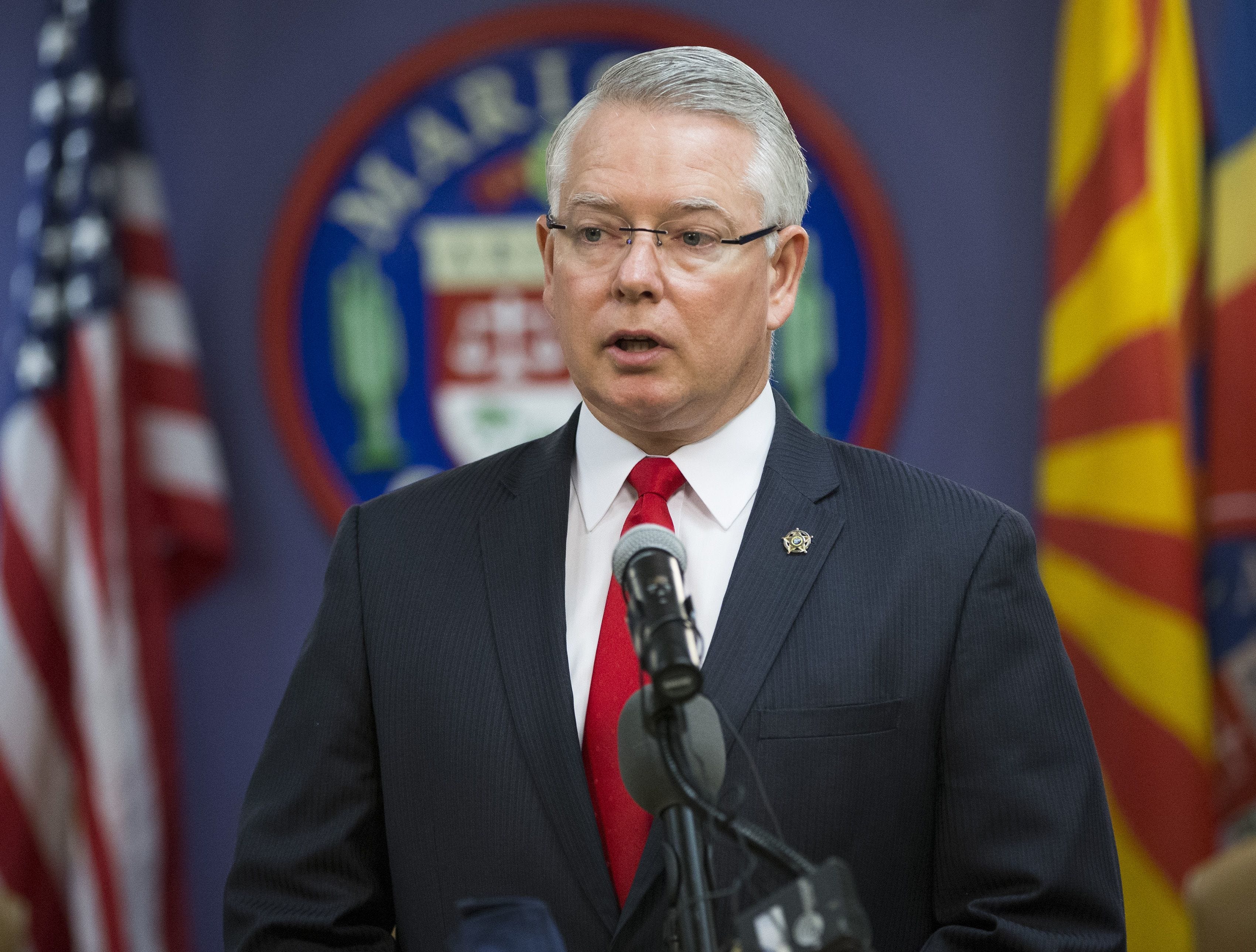
Guereña's wife had awakened her husband, telling him that intruders were trying to break into the house. Guereña armed himself while his wife and 4-year-old son hid in a closet.
Officers said they shot because Guereña fired an AR-15 at them when they entered his house. Detectives later determined that Guereña didn't fire his weapon and it had the safety on. Detectives didn't find any illegal drugs in Guereña's home.
He was hit by 22 of 71 rounds.
Pima County Attorney Barbara LaWall declined to charge the officers with murder, saying they were justified under the law because they "needed to take immediate action to stop the deadly threat against them."
Guereña's family sued Pima County and the case was eventually settled for $3.4 million.
Steve Serbalik, a lawyer who represents police officers accused of misconduct, said officers aren't always perfect in their decisions. But, he added, people should understand that officers' decisions to use force are made in stressful, potentially dangerous situations.
"The question is, 'What was the situation that the person who was involved in the shooting faced with? What was the thought process that was going through their head?" he said. "And whether they were perfect, whether they were right in terms of objective facts as to what they saw, or whether they were wrong but their perception was reasonable at the time is actually the question."
Mental health: A volatile factor
Mental illness was cited as a factor in 15% of the police shootings, but many criminal-justice experts believe that number is low.
Mental illness was not mentioned in 227 of the 600 cases in the database. The Republic analysis counted only cases where there was a clear indication that mental illness may have been a factor in a shooting; for example, if the one contacting police said that the person had been diagnosed.
"Diagnosing mental-health conditions on the spot for police officers is extremely difficult. Oftentimes, police officers are put in a difficult position trying to make that determination of what is a threat versus what is not a threat," said Rashawn Ray, an associate professor of sociology at the University of Maryland.
On Aug. 14, 2014, Phoenix police arrived at the apartment of 50-year-old Michelle Cusseaux, who suffered from bipolar disorder, schizophrenia and depression, to take her to a mental-health facility.
Cusseaux answered the door with a hammer above her head, police said. Sgt. Percy Dupra, who at the time was a 20-year veteran, fired one round into her chest, killing her.
The shooting happened five days after Officer Darren Wilson fatally shot 18-year-old Michael Brown, who was unarmed, in Ferguson, Missouri.
While the Brown case captured most of the country's attention, Cusseaux's shooting became a local rallying cry for those seeking changes in how police treat people with mental illness.
Days after the shooting, Cusseaux's family and supporters marched with the woman's empty casket from Phoenix City Hall to the U.S. Attorney's Office in downtown Phoenix.
"I'm asking for help for my daughter, who has a mental issue, and ... the help ended her life," Cusseaux's mother, Frances Garrett, said. "That's hard to believe."
I'm asking for help for my daughter, who has a mental issue, and ... the help ended her life.
Dupra was cleared of any criminal wrongdoing. But in 2015, an internal panel at the Phoenix Police Department said the shooting violated policy. Dupra retired in 2017.
In Tucson, there was 30-year-old Abraham Smith. Ryder Schrage, an officer with the Tucson Police Department's Mental Health Support Team, shot and killed him on July 8, 2016.
Schrage was cleared of criminal wrongdoing, but a Tucson police panel recommended that changes be implemented at the department in how officers serve mental-health orders.
In this case, Smith's sister had called police to help her take her brother to a mental-health institution. Three officers arrived at Smith's trailer, where he lived alone. The sister had warned police her brother "was distrusting of police, and that police presence would frighten him," according to a letter by the Pima County Attorney's Office.
Police repeatedly knocked and asked Smith to come out before they entered the trailer.
Smith, holding a knife and shard of glass, walked toward the officers. The officers walked out of the trailer and Smith continued to walk toward them.
Schrage fired two rounds, killing Smith.
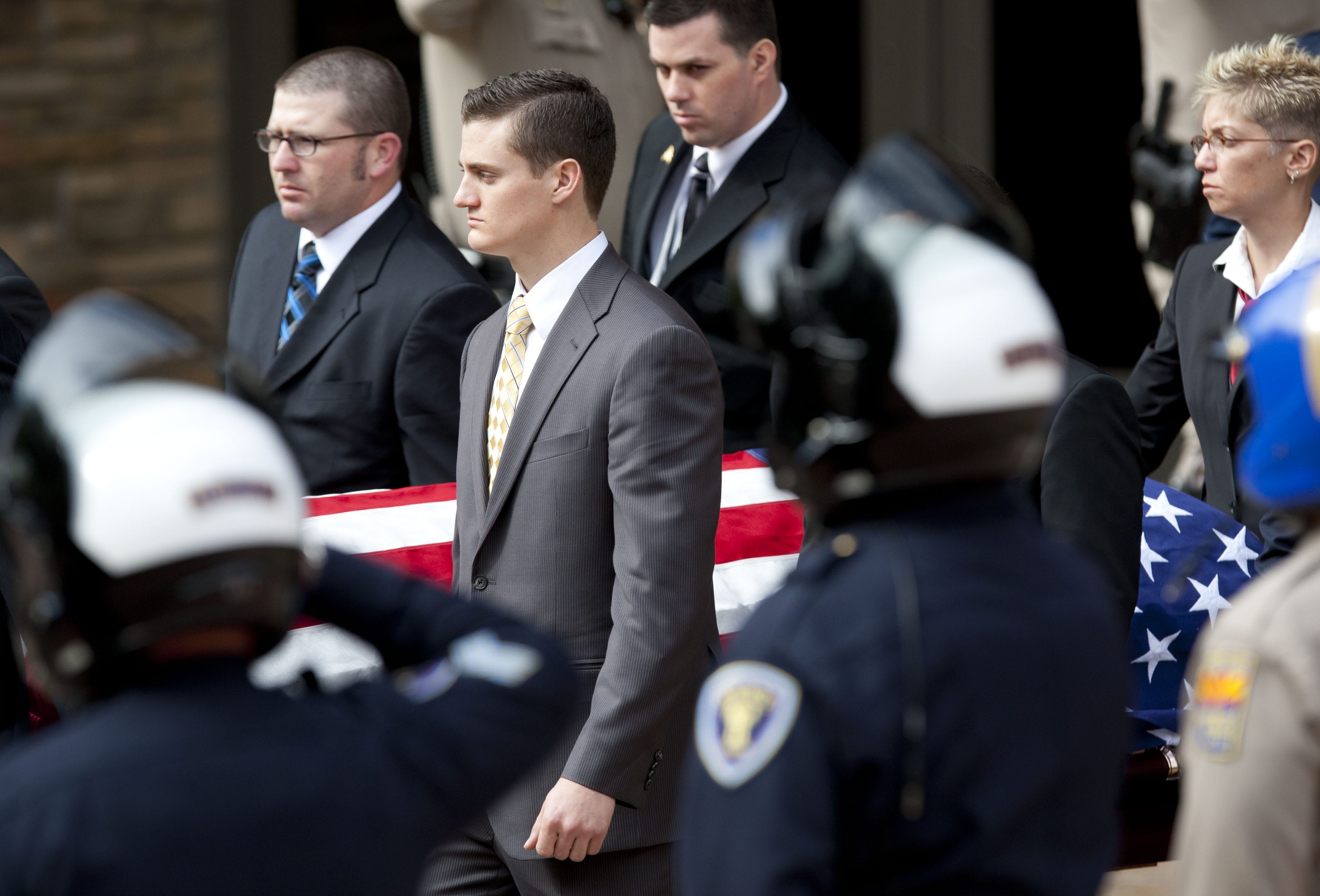
Armed: With guns, knives, barbecue tongs
Some situations are inherently dangerous, while others can escalate quickly in unexpected ways.
On October 28, 2011, Ryan Heisler killed Glendale Officer Bradley Jones, 27.
Jones had accompanied a probation officer to a meeting at an apartment complex with Heisler. The meeting turned violent when Heisler fired his gun, striking Jones several times.
Jones was able to call for help and was taken to a hospital, where he died early the next morning.
Heisler fled in Jones' police car and led officers on a police chase before he crashed. Heisler attempted to flee again but was shot and injured by the officers.
In hundreds of cases, the people shot were armed with a gun or a knife. Others were armed with nontraditional weapons such as a sword, hockey stick or machete, The Republic found.
Officers are getting away with shooting people that really don't have deadly weapons in their hands. Because they're making the excuse of they're feeling threatened.
Benjamin Taylor, a Phoenix lawyer who has represented people who have claimed police brutality, pointed out that Arizona is an open-carry state, which allows people to carry a gun in plain sight and without a permit. He said just because a person has a gun doesn't automatically give officers leeway to use deadly force.
But, he said, he understands the lethal threat of a gun. What he doesn't understand are cases in which police have claimed being threatened by less dangerous objects.
On June 12, 2018, Phoenix police responded to a call of a man trespassing at an extended-stay hotel on Osborn Road near Second Avenue. An officer tried to handcuff Alexandre Andrich, 34, but he only got them around one wrist.
Andrich got away from police, and Officer Gus Kostas fatally shot him. Kostas said he feared for his safety. The weapon: the partially-applied handcuffs.
On October 17, 2013, Margarito Torrez-Vega, 22, assaulted his girlfriend in front of officers, walked into the house and started a fire inside the kitchen, according to court records.
Torrez-Vega then walked out of the house and toward the officers "in a deliberate manner with a sharp instrument," court records said.
Officer Mark Jordan shot and killed him. The "sharp instrument" was later determined to be BBQ tongs and a ladle.
Taylor said, "Officers are getting away with shooting people that really don't have deadly weapons in their hands. Because they're making the excuse of they're feeling threatened. And unless officers truly believe that force is being used against them with a gun, why can't they use other means to subdue citizens without killing them?"
Race and ethnicity: 'A deeply disturbing pattern of similar tragedies'
Race and ethnicity is a key component in the conversation about police shootings in many parts of the country. Michael Brown's shooting in Missouri and the fatal shooting in 2016 of Philando Castile, a 32-year-old black man in Minnesota, drew national outcry and public demonstrations.
But shootings of Native American, Hispanic or black people in Arizona have gone next to unnoticed nationally.
The March 2016 fatal shooting of Loreal Tsingine, a citizen of the Navajo Nation, by Winslow Officer Austin Shipley strained relations between the city and the tribe.
It raised concerns among Native Americans and also spurred protests locally. Asked by Navajo County to review the shooting, Montgomery's office declined to file criminal charges against Shipley, who had resigned from the department.
Shipley had responded to a shoplifting report at a Circle K. He found Tsingine, who fit the description given by a store clerk, a few blocks away. Shipley tried to arrest Tsingine. She brandished a pair of scissors. Shipley fired his gun five times, killing her.
The U.S. Department of Justice also investigated the case but declined to file charges. The Navajo Nation sued the federal agency and Winslow, claiming Tsingine's civil rights were violated. A federal judge dismissed the lawsuit.
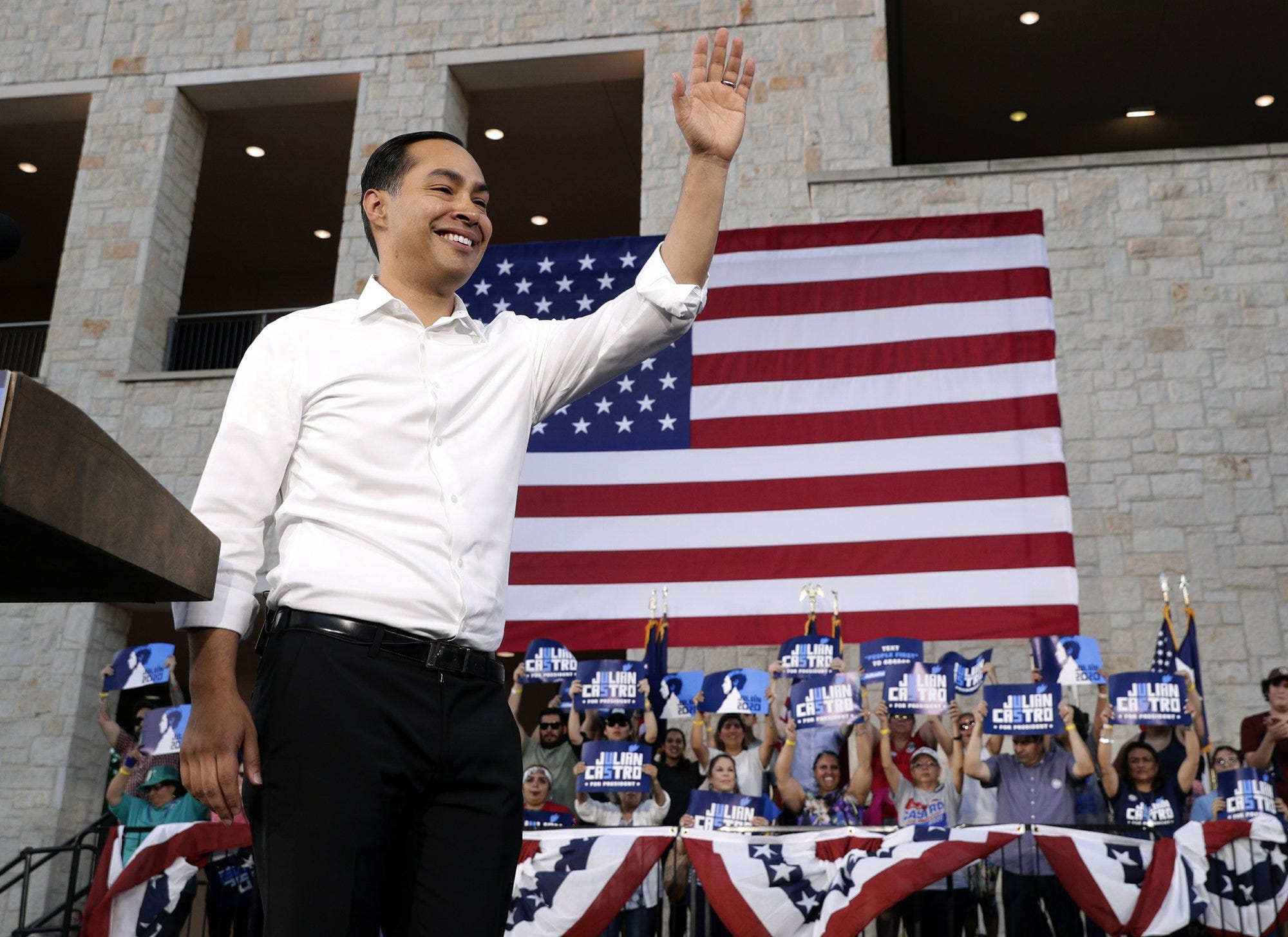
The shooting, which was recorded on the officer's on-body camera, received a lot of local attention but almost none of the national coverage that other fatal police shootings of people of color have received. That has been a common occurrence with police shootings in Arizona.
Community leaders said that's not because questionable shootings haven't happened, but because Arizona's advocacy community has been focused in the past decade more on immigration issues.
That is beginning to change.
As an example, some pointed to Democratic presidential candidate Julian Castro's comments after a Tempe police officer killed 14-year-old Antonio Arce.
On Jan. 15, Officer Joseph Jaen fatally shot Arce, who was running away from police while holding an airsoft gun. Protesters demanded changes in police training and that the officer be fired. Jaen later resigned.
Castro, a former secretary of U.S. Housing and Urban Development under the Obama administration, posted a message Jan. 31 on his campaign website.
"Because, sadly, Antonio's story isn't an isolated incident. It joins a deeply disturbing pattern of similar tragedies in this country of black and Latino youth who have been fatally shot by police officers despite posing no imminent risk to those officers,'' Castro wrote.
Hernandez, the executive director of Poder, said she began looking at the people shot by police and noticed that many of the same families immigrant rights groups had helped also experienced police violence.
"It wasn't just about people being arrested, it wasn't just about people being deported," she said. "It was also about police shooting people."
On Aug. 5, 2018, Phoenix police officer Kenneth Silvia shot 35-year-old Edward Brown, who is black, paralyzing him.
Silvia was responding to a call about possible drug activity in an alley near 19th Avenue and Indian School Road when he confronted Brown and another man, who fled. The police report stated Brown tried to take Silvia's gun, but his lawyer, Tom Horne, disputes this.
Because, sadly, Antonio's story isn't an isolated incident. It joins a deeply disturbing pattern of similar tragedies in this country of black and Latino youth who have been fatally shot by police officers despite posing no imminent risk to those officers.
They have filed an excessive-force lawsuit against the police department in federal court.
“The way he was treated constitutes cruel and unusual punishment under the Eighth Amendment of the United States Constitution,” Horne said at a news conference in September.
Few entities in the state appear to track the ethnicity of people shot by police.
The Republic studied court records, prison records, obituaries and police reports in an attempt to compile the information.
In Phoenix, data shows, Native Americans and black people were disproportionately shot when compared with their population numbers in the city.
- 6% of the people shot were identified as Native American. Native American people make up 2% of Phoenix's population.
- 14% of the people shot in Phoenix were identified as black. Black people make up 7% of Phoenix's population.
- 42% of the people shot were identified as Hispanic. Hispanic people make up 43% of Phoenix's population.
- 38% of the people shot were identified as white. White people make up 42% of Phoenix's population.
Ray, the sociology professor at the University of Maryland, said efforts to collect data on race and ethnicity for people who come into contact with police is more challenging in areas where there is a high Hispanic population.
Police officers tend to use skin color in determining a person's race or ethnicity. Because Hispanic people's skin color can vary, he said, officers may identify a person as white even though that person may not be white.
"It could be a much higher percentage of, say, Latinos in Arizona or people who are multiracial in Arizona who experience police use of force," he said. "But since race oftentimes becomes unclassified, people can't necessarily capture those patterns."
Multiple shootings by same officers
According to the database, former Mesa police officers Michael Pezzelle and James Edward Pollard had five shootings each between 2011 and 2018. Before they retired in 2018, both men were part of a task force overseen by the U.S. Marshals Service, which serves warrants on people wanted for crimes.
Both were involved in the fatal shooting of 17-year-old Sariah M. Lane, who was unarmed, on April 20, 2017. The case is now the subject of a federal lawsuit filed on behalf of Lane's mother.
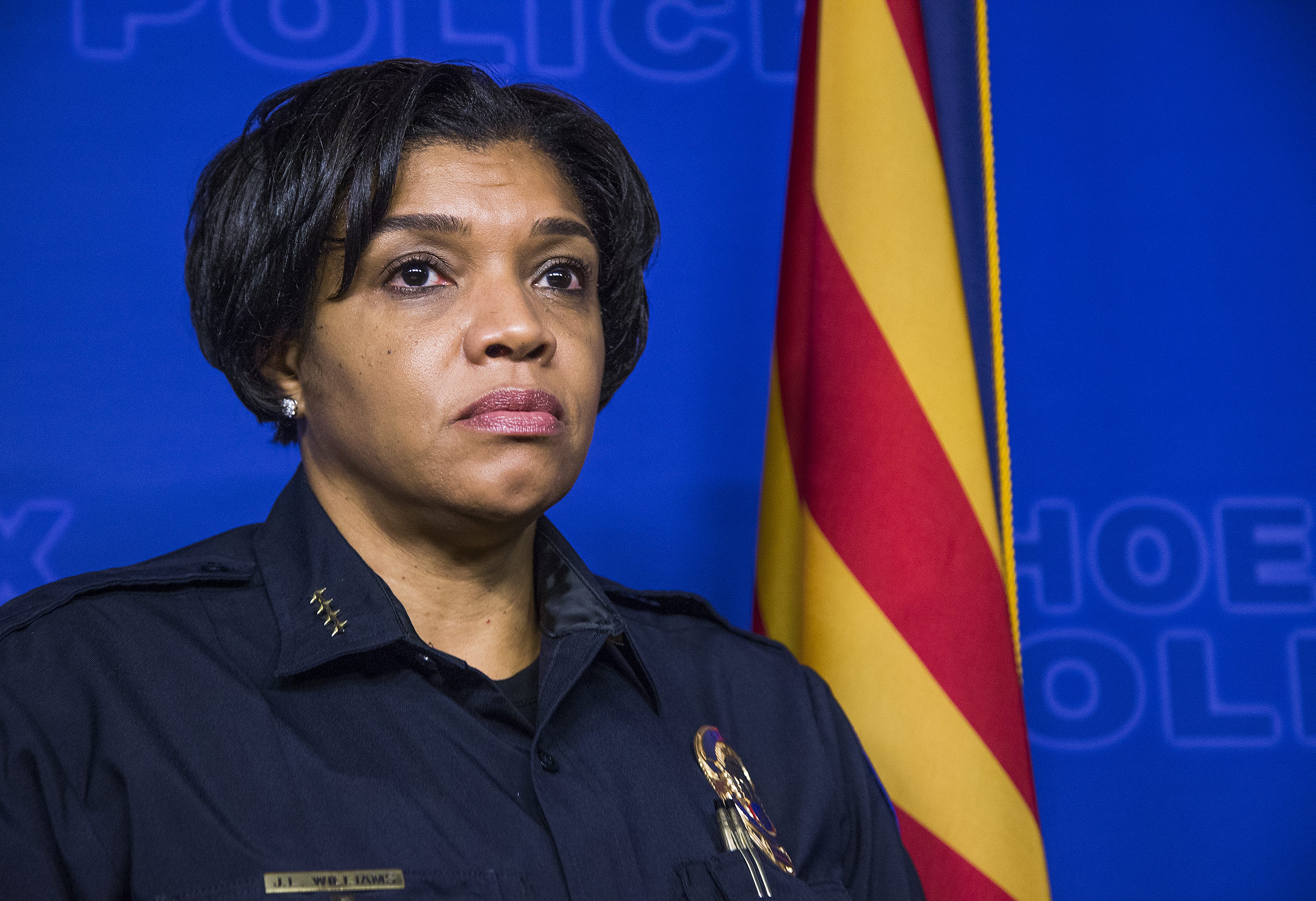
The task force was attempting to arrest fugitive Brandon Pequeno for kidnapping, domestic violence, aggravated assault and felony warrants. He was considered armed and dangerous.
The task force followed him to an apartment complex parking lot near 51st and Northern avenues in Glendale. As Pequeno began to drive out of the parking lot, four SUVs trapped him, the lawsuit says. Pequeno was in the driver's seat, Damien Sandoval-Rosa was in the front passenger seat and Lane was in the back.
"Without warning or provocation, Task Force members began to shoot into Brandon's car," the lawsuit says.
One officer used a shotgun to fire a bean-bag round into the front driver's windows. Pezzelle, Pollard and Mesa Officer Hoapili Baker were standing behind Pequeno's Toyota Corolla and shot into the car, the lawsuit says. They were the only task-force members to use deadly force.
Pezzelle shot seven rounds from his .45 caliber Sig Sauer 1911. Pollard fired at least three times and Baker fired at least once, the lawsuit says. Lane was shot in the head and died the next day.
We're always concerned about officer-involved shootings. One police shooting is one police shooting too many.
A Mesa police spokesman said the department was aware of the number of shootings each officer had. He explained that each of the officer's five shootings had occurred on task force assignments. The department declined to comment further because of pending litigation.
Joel Robbins, the attorney who filed the lawsuit, didn't respond to a request from The Republic seeking comment.
The unit officers work in can affect their chances of being involved in a shooting.
Phoenix Police Chief Jeri Williams mentioned the fugitive-apprehension detail or the special-assignments unit as areas in which officers are more likely to be involved in a shooting.
Though she expressed no specific concerns about officers who have shot multiple people, she said her department can do better.
"We're always concerned about officer-involved shootings," she said. "One police shooting is one police shooting too many."
2019 may not be as deadly as 2018
Through May 26, at least 29 police shootings had occurred statewide in 2019, eight of them involving Phoenix police. At the same time last year, there had been 57 police shootings in Arizona.
The ripple effects of prior years' shootings linger.
The Department of Justice is still investigating whether Brailsford, the police officer who was acquitted for murder, violated Shaver's civil rights when he killed him. Shaver's family has a pending multimillion-dollar lawsuit in federal court against Mesa.
The Phoenix Police Department is still trying to regain the community's trust after its high number of police shootings. On average, Phoenix police shot someone every eight days in 2018, a significant increase from 2015, when there was a Phoenix police shooting every 21 days.

Both Mesa Police Chief Ramon Batista, and Phoenix Chief Williams are grappling with the issue. Batista has made changes in his department's use-of-force policy after a series of videos showing his officers punching, kicking or kneeing people were publicly released.
Williams has committed her department to adopt National Police Foundation recommendations, such as more training for officers in how to respond to people with a mental health illness.
The Phoenix Police Department also recently purchased about 2,000 Axon body cameras for most of its officers. This move could create more transparency, Williams has said, because it would allow the public to view interactions between police and residents.
After a controversial police stop of a Phoenix couple with two young children in the car, Gallego vowed that most officers would have body cameras by August.
Witness video shows police pointing guns and yelling threats at Dravon Ames, 22, his pregnant fiancee, Iesha Harper, 24, and their two young daughters. The family said their daughter took a doll from a Family Dollar store on May 27.
Phoenix is the largest city in the nation without body cameras for most of its officers.
At a May 22 Phoenix City Council meeting, the council voted to increase the police department's budget by $300,000 to help the department implement some of the Police Foundation's recommendations.
Protesters showed up wearing black shirts, holding signs with the names of people shot and killed by Phoenix police.
They are dubious more funding can help.
"This wasn't the first time that they've made some of these recommendations," said Parris Wallace, an organizer with Poder in Action. "If you look back over the years, for the last 30 years to be exact, it's like implicit bias training, better de-escalation, all of those things.
"But seeing if it actually gets implemented is what we're looking for. And also, holding the police officers accountable, to a real level of accountability."
Arizona Republic reporter Raquel Baier contributed to this article.
